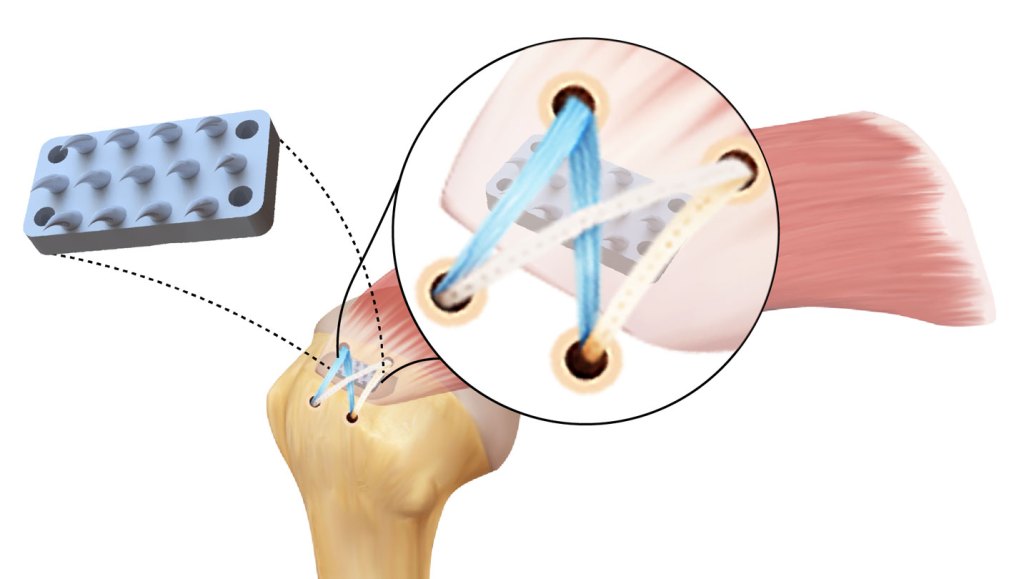"Python-Inspired Device Promises Enhanced Efficacy in Rotator Cuff Surgeries"

Each year, 2 million people in the United States suffer from rotator cuff injuries — but only 600,000 get surgical fixes. A new, python-inspired device might close that gap.
Rotator cuff surgeries have failure rates between 20 and 94 percent. With the likelihood of retearing, doctors sometimes decide not to operate. But a medical instrument modeled after python fangs could double surgical repair strengths and prevent retearing when used alongside standard sutures, researchers report in the June 28 Science Advances.
Science News has partnered with Trusting News to gather feedback on the potential use of AI in journalism. Currently, we do not publish any content produced by generative AI (see our policy). We do want to hear your views on how Science News could use AI responsibly. Let us know by participating in a short 10 question survey.
“A device like this is much more elegant than what they use now,” says Eric Nauman, a biomedical engineer at the University of Cincinnati who was not involved in the study. “Anything you can do for the shoulder right now is a win.”
An injury to the rotator cuff — a group of muscles and tendons surrounding the shoulder — can include tears and inflammation that result in pain and limited function. Surgical repairs are meant to fix a torn tendon, often by reattaching it to the head of the arm bone. But sutures, which are anchored at only a few points, can retear the already fragile tendon.
Biomedical engineer Stavros Thomopoulos and colleagues designed a device to solve this problem. Using an array of small, pointed teeth that latch onto the tendon and bone, the device spreads and lessens the force on each part of the damaged tissue. The inspiration for the device came from nature. Unlike a shark’s teeth — which are razor-sharp triangles designed to cut — a python’s fangs are curved inward, designed to dig deeper when an animal struggles. “This was kind of a lightbulb moment,” says Thomopoulos, of Columbia University.
The team first used calculations and computer simulations to optimize the teeth’s size and geometry. Using 3-D printing, the researchers created teeth and arrays of teeth before optimizing placement and grip. Working with surgeons, the team tested iterations of the “teeth” on cadavers, fixing one shoulder with only sutures and the other with sutures and the device.
“We mechanically tested the strength that the device was adding to keeping this construct together,” says Iden Kurtaliaj, a bioengineer at the Icahn School of Medicine at Mount Sinai in New York City. The researchers found that shoulders with their device had twice the holding strength as those without.
Before progressing to clinical use, the design needs to be tested in live animals to prove long-term function and safety, says Ghanashyam Acharya, a biomedical researcher at Baylor College of Medicine in Houston. As the body heals, the material could degrade or injure the tendon. Still, Acharya says, the new study shows a “strong theoretical rationale” that marks it as a “significant and innovative first step” toward more effective rotator cuff surgeries.




